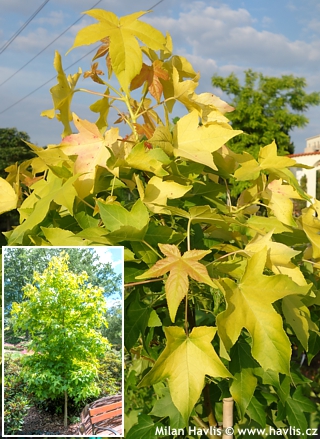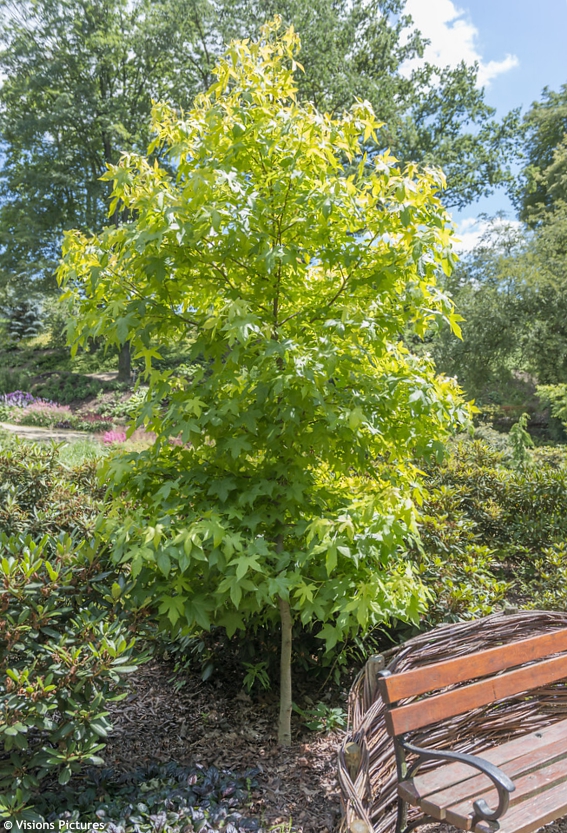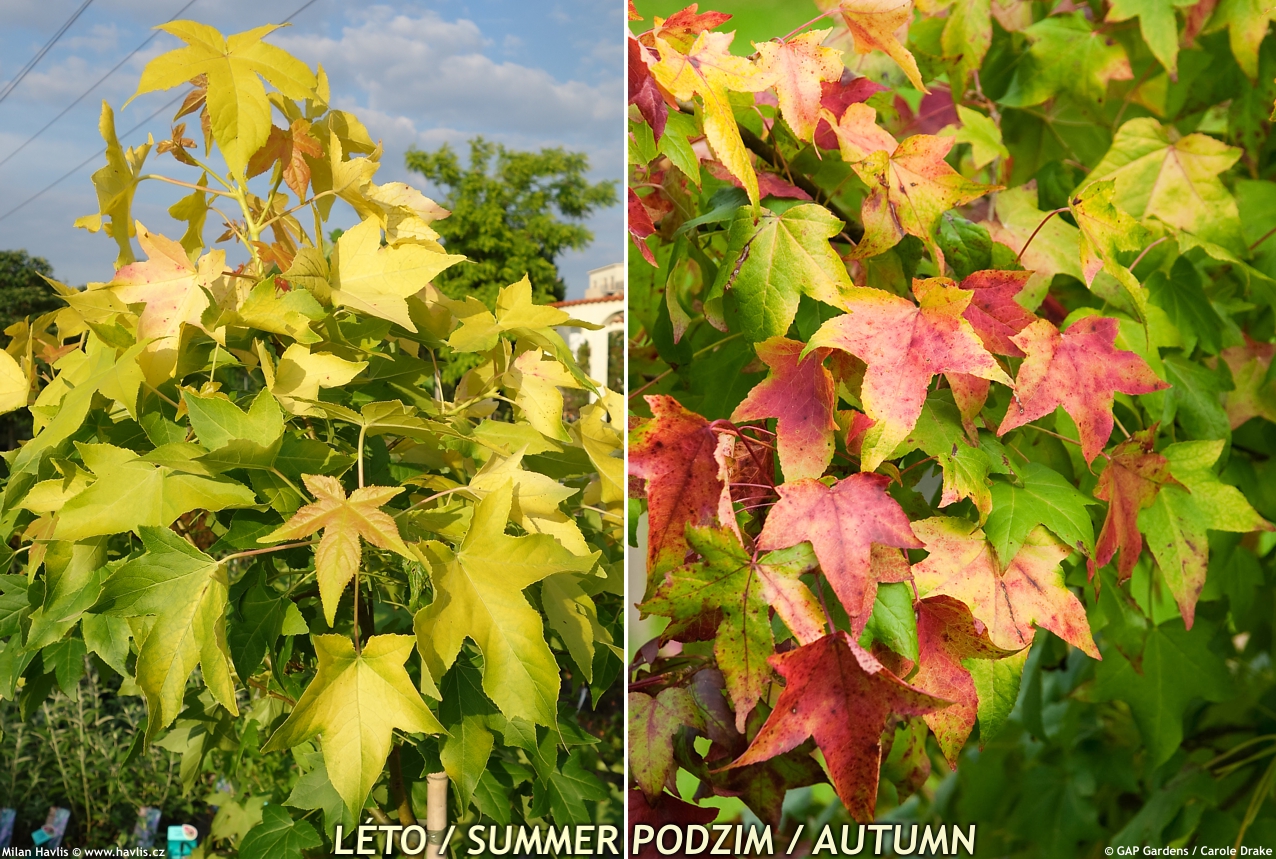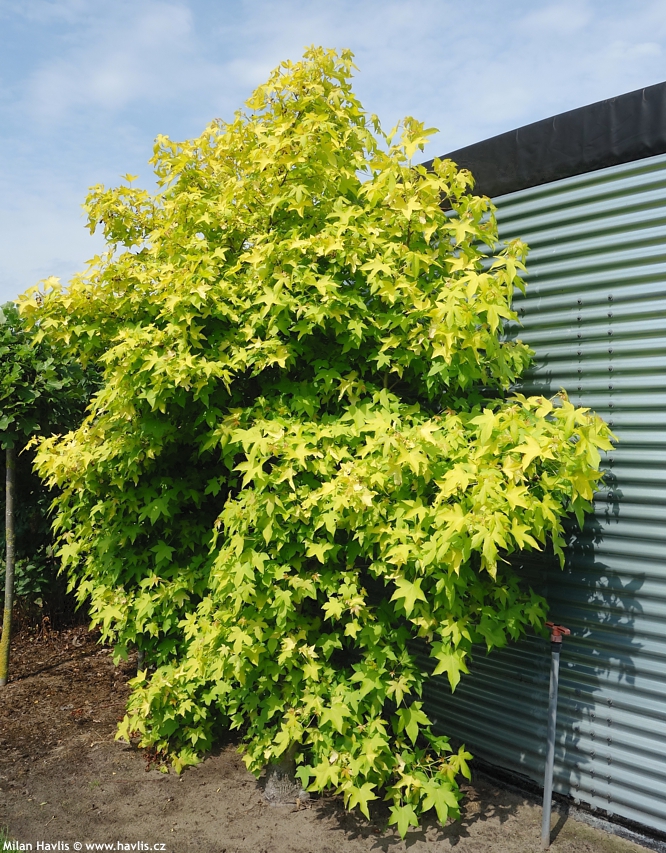Liquidambar styraciflua 'NAREE' sweet gum


Liquidambar
Sweet gums are highly ornamental trees or shrubs which have been on top of the popularity list for centuries. They come from North America from where they spread to almost the entire world: from colder parts of temperate regions to southern countries where summer temperatures easily reach 40 °C. Their give-away are star-shaped leaves which can easily be mistaken for maple leaves, and their autumn colours which are simply breathtaking.It is a deciduous tree or a tall shrub with upright branches and slower growth compared to the species (about 30 cm per year). It naturally forms a regularly pyramidal shape and exhibits dense branching even without pruning. You can grow it as a shrub feathered from the ground, but it can also be trained into a tree with a single leader. It is easy to shape and can be kept smaller by pruning at the end of winter. Once you give it a desired form it does not usually go wild to spoil it for a long time. Another nice feature is the fruit. Formed in about 3 cm wide spiny spheres they can be quite attractive to look at and a bit irritating when stepped on barefoot once they have hardened up, if not cleared from pavements or lawns in spring.
Sweet gums are quite soil adaptable but prefer semi-fertile, deep, evenly moist but well-drained soil that should be acidic or at least neutral. It will not thrive on chalk or lime. Once established they can take both temporary flooding and drought. The more acidic and moist soil you can provide (by adding peat and mulching the roots with bark) the better autumn colours can be expected. The location should be sunny as it does not tolerate shaded areas. If you buy a plant taller than say 1.5m stake it well for minimum of 2 or rather 3 years. Plants older than 3 years are fully hardy to about -27 °C (USDA zone 5).
Last update 08-11-2021
Goods are shipped all over Europe. For Russia and U.K. and for further details please read about SHIPPING OPTIONS HERE.
Are you interested in a serious discount for orders NOV-FEB? Check your options here.
THE PRICES INCLUDE VAT of 15%. For quick conversion you can use 1 CZK = approx. 0.04 EUR
- STANDARD QUALITY - Plants of this group are 1st class quality with number of branches and overall density adequate to their size and age, considering they were container grown.
- DE LUXE QUALITY - This label guarantees a luxurious quality of manually selected plants that, compared to their height and age, are exceptionally dense and beautiful.
- EXTRA - These plants are usually mature and bigger specimens with exceptional overall appearance.
- STANDARD (as described in the plant form) means a tree with a trunk of 190-210 cm and a crown at the top, unless specified differently. The commercial size for trees is their girth measured in the height of 1m from ground.
- HOBBY - These plants are of the same quality as our standard-quality plants but younger and therefore cheaper.
- SHRUB - a woody plant with branches growing bushy from the ground level.
- HALF-STANDARD or MINI-STANDARD - a small tree with shorter trunk, its size is usually specified.
- FEATHERED - These are trees with branches growing already from the base of the trunk and up along the stem.
- GRASSES and PERENNIALS - Sizes given usually read the diameter of the pot or the clump, as specified.


















